Click Here to Download PDF Version

Telehealth Newsletter
Official Newsletter of Tamil Nadu Chapter of Telemedicine Society of India
|
What is New? I am pleased to inform you about the online telemedicine course from TSI for the RMPs. This self-learning course with live interaction with the course faculty became operational this month. The course is called ‘Train to Practise Telemedicine’ and is housed on the learning management platform called MOODLE. In the near future ‘Telehealth speciality courses’ will also be developed. Please visit https://tsi.org.in/courses to view all the courses. If you wish to contribute as a TSI member you are most welcome to join us in development and delivery of these courses. With the last issue of the Newsletter we have introduced visual abstract of articles. Please find the second visual abstract from TELEMEDICON2020. We have also shared the Telemedicine course video – we request you to forward this in your groups to make the course popular. Thank You. |
Towards Blockchain Based Secure Healthcare Information Systems
Prof. Prabhu Rajagopal
Faculty-in-charge, CFI, IIT Madras, Associate, Center for Non-destructive Evaluation
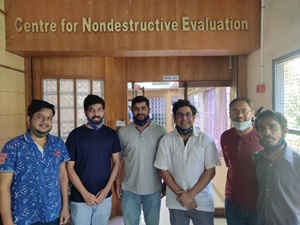
A team guided by Prof. Prabhu Rajagopal, Lead Faculty – Remote Diagnostics at the Center for Nondestructive Evaluation (CNDE), Department of Mechanical Engineering, IIT Madras (IITM) has developed a first-of-its-kind Blockchain-based secure medical data and information exchange mobile application “BlockTrack” currently out on trial at IITM Institute Hospital. The BlockTrack project aims to securely digitize Healthcare Information Systems while ensuring protection of sensitive personal information and medical records by decentralizing the control and ownership of patient data, through a Blockchain-based innovation. Additionally, the algorithm to generate identification codes for users ensures uniqueness across boundaries with very little chance for duplication.
This disruptive innovation opens up the promise of a universal and transferable Healthcare Information Management with a strong emphasis on data privacy, and tracking the spread of infectious diseases across geographies. The Android version of the application has been developed separately for both patients as well as doctors.
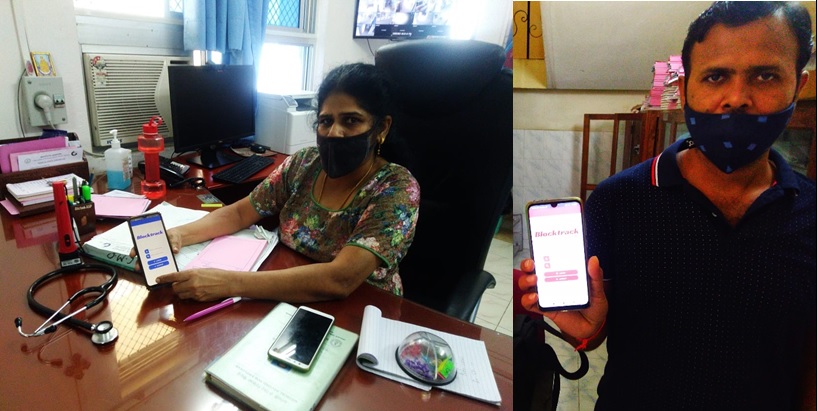
(R) Team member at the hospital with the Patient app.
Key outcomes from this project are:
- Universally Unique Identification: Blockchain-based identifiers that are nearly impossible to duplicate
- Interoperability of Systems: multiple hospitals, institutes, and healthcare organizations can join the system.
- Single point records: The patient can choose to visit any healthcare facility which is on Blocktrack’s Blockchain Network without having any concerns about duplication of records or re-registrations. The consistency of the data flow is maintained without any branching issues.
- This Blockchain platform developed by the team can further be used to integrate medical supply chain management and proactive tracking of the spread of contagious infections.
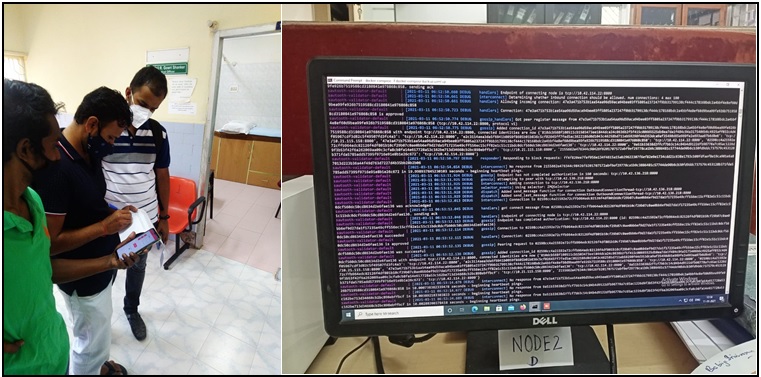
Reflecting on this innovation, PI Prof. Prabhu Rajagopal said “Initiated at the height of the COVID pandemic, BlockTrack is an exciting project close to my heart, as this work showed that engineering innovations have disruptive potential to transform multiple domains. This is one of the first implementations of Blockchain technology for securing Healthcare Data management systems and we see the immense impact this approach can make in securely digitizing and maintaining unique patient records across the country and indeed across the world eventually. The system of permissions natural to Blockchain based distributed ledgers allows editability while maintaining privacy, opening up the possibility to integrate this system across primary healthcare, prescription, pharmacy, distribution and even insurance networks.We are grateful to Dr Sapna Poti at the office of Principal Scientific Adviser (PSA) to Government of India who brought the opportunity for funding this project under COVID themed support, and Infosys Limited for backing our vision. Dr Ravi Kumar of Infosys has been a gracious and supportive patron for this effort”
Prof. K. VijayRaghavan, PSA to the Government of India said “The National Digital Health Mission launched by the Government of India last year had the secure processing of individual data, and the easy accessibility of digitalized personal and medical records by individuals and health service providers, as its two important objectives. Effective implementation of these objectives will require leveraging emerging technologies. BlockTrack is a step in the right direction and I congratulate the team from IIT Madras for developing an innovative solution for a complex health information system. This will enhance and enable the efforts of health systems to efficiently track disease spread, and maintain confidentiality while storing personal data in a network.”
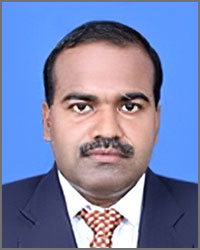 Teleophthalmology Adoption – Barriers and Solutions
Teleophthalmology Adoption – Barriers and Solutions
Dr. T. Senthil MBBS DO FICO
Ophthalmologist and CEO Welcare Health Systems Chennai
Honorary Secretory, Telemedicine Society of India Tamil Nadu Chapter
With the COVID-19 Pandemic, as with any other modality of Telemedicine, Teleophthalmology Teleconsultations also saw a huge uptake initially- but as time progressed, the no of Teleophthalmology consults gradually came down to almost precovid levels. This article would evaluate the barriers and possible solutions for Teleophthalmology revival.
Teleophthalmology is done through the following modalities:
- Teleophthalmology Consultation between Patient and an Ophthalmologist,
- Image Based Teleophthalmology for Diabetic Retinopathy Detection,
- Teleophthalmology for Retinopathy of Prematurity.
This article mostly covers the Teleconsultation part of Teleophthalmology.
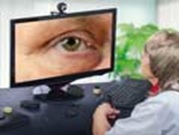 |
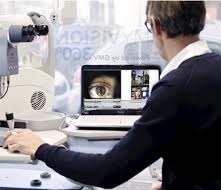 |
Acceptance by Ophthalmologists and Patients
Teleophthalmology adoption by Ophthalmologists was very minimal before COVID, but once the pandemic struck and lockdown announced, Ophthalmologists started reaching out to their patients using Digital modalities, and patients also were accepting this newer modality. According to a study done by All India Ophthalmic Society only 17.5 % of Ophthalmologists were using Teleophthalmology currently, in another study 98.6 % of Ophthalmologists were willing to incorporate Teleophthalmology in their practices. There was an initial hesitation for the patients to make payment for Tele consults, but as time progressed patients started paying and this barrier was overcome.
The pandemic has hence created good acceptance level of Teleophthalmology among Patients and Doctors.
Dependence on Diagnostic Tests and Equipment’s
This is the most Important barrier to Ophthalmic Teleconsultations, since unlike psychiatry or dermatology, an Ophthalmic examination involves various tests right from testing Visual acuity, Intraocular pressure, anterior segment imaging and fundus evaluation. An Ophthalmic examination on a patient can only be done, if we get lot of information about the condition of the eyes, for which all these equipment’s are invaluable, it may not be possible to conduct these tests at patients houses, hence the number of conditions which can be treated by just doing a tele consult and seeing images of the Eye through regular computer or mobile cameras becomes grossly limited. This barrier can be addressed when there is app-based tests of visual acuity and mobile cameras getting in higher quality images etc. Till that time a model wherein patient can reach a nearby centre (Example an Optometry clinic, or Optical shop) where these equipment’s are available and tele consult done from that centre may be a viable option.
High Cost of Equipment’s and Poor Quality of Images
Other challenges
- Lack of Trained Staff
- Policy and Regulatory barriers
- Privacy and Security concerns
With Innovations in Ophthalmic Devices and with advancements in machine learning and Artificial Intelligence, Image based Teleophthalmology will definitely see a growth in the coming years, Ophthalmic Tele consult will take its time, but as home-based devices are improved and available for a lower cost, there will be increase in Teleconsultations in Ophthalmology in the coming years.
The Author Dr. Tamilarasan Senthil can be contacted at senthil@welcaretelemed.com
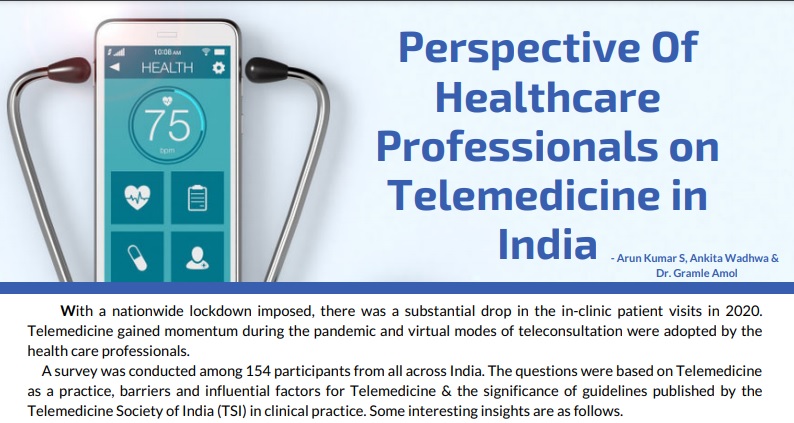
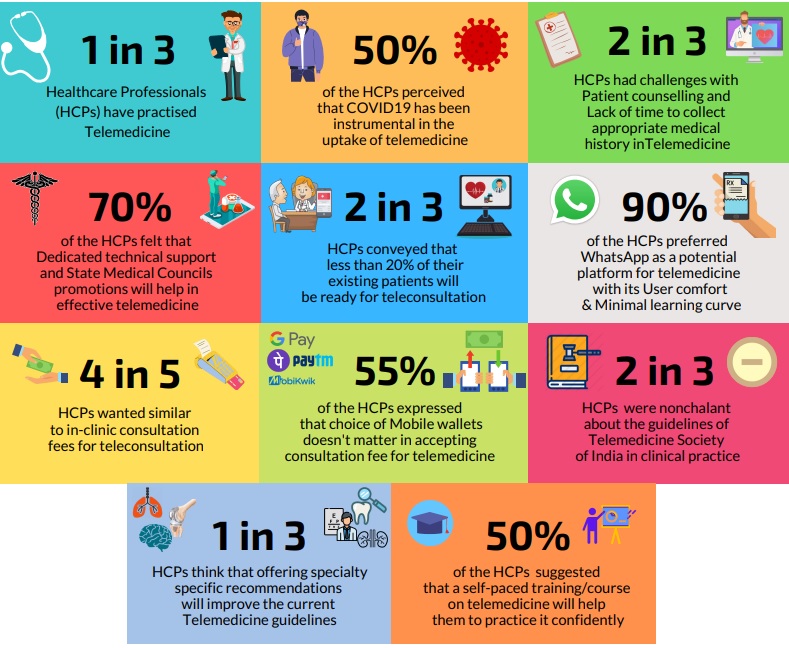
TAKING YOUR PRACTICE ONLINE (PART 2): LEGAL COMPLIANCES AND GOOD PRACTICES
Anay Shukla
Founding Partner, Arogya Legal – Health Laws Specialist
Eshika Phadke
Associate, Arogya Legal – Health Laws Specialist Law Firm
In our last article, we wrote about general considerations to be kept in mind before venturing into telemedicine. In this article, we will discuss important legal considerations to be kept in mind for operating a virtual clinic.
The Telemedicine Guidelines published last year recognize voice-video and text-based modes of consultations, so a doctor may choose to offer teleconsultation over any telemedicine apps, messaging/videocall app, SMS, email, or even set up a personal website for teleconsultations. But, while offering teleconsultations, it is important to be clear about legal dos and don’ts.
Registration of Online Clinic
A common question that doctors have is whether they ought to register their work premises (or home) with any government body since they are offering medical services from the premises. In other words, does a doctor need to obtain a registration from a government department to operate a telemedicine “clinic”? The answer is NO, at least not at the moment. The existing clinical establishment or nursing home laws in various states in India regulate only those premises which receive patient footfall. By definition, virtual consultations between patient and doctor do not involve patient footfall at the premise from where the doctor is offering medical consultation. Therefore, clinical establishment or nursing home laws are presently not triggered by medical teleconsultations. Needless to say, if the venue is also used for in-clinic consultations, it would require registration under applicable clinical establishment/nursing home law.
Please note that this position may change in future if the law starts recognizing telemedicine-focused clinics as “clinical establishments”.
Website and privacy-related compliances
If a doctor decides to offer teleconsultation through his or her own website, then there are certain legal requirements that must be complied with. The most important requirement would be to put in place a privacy policy. The exhaustiveness of the privacy policy would depend on the type of website that the doctor is operating. For example, if a website’s sole purpose is to enable patients to book an appointment, which is then conducted off the website (on a call, WhatsApp, Zoom, etc), a basic privacy policy specifying that the patient’s information is being collected so that the doctor can set up the appointment, would suffice. In such a case, the doctor should refrain from using a form on the website to collect information about the patient’s health condition since it would invite more stringent data privacy related compliances.
If a doctor is operating a website through which he/she can directly consult with the patient, the privacy policy would need to specify what kind of data (e.g. mental health data, physiological data, diagnostic reports, discharge summary etc.) is being collected, the purposes for which the collected data will be used and for how long will the patient’s data be stored, at the minimum.
The website should also have a term of service available as a link on the website itself, which outline the conditions under which services are being made available to the patient. An appropriate legal disclaimer should also be put on the website as applicable, such as that the telemedicine services over the website are not intended to be used in emergency situations.
Furthermore, a website or an app that offers teleconsultations would be considered as an e-commerce entity and as per the Consumer Protection (E-Commerce) Rules, 2020, an e-commerce entity must compulsorily be a company. Thus, a doctor has to incorporate a company if the doctor wishes to offer telemedicine services through the doctor’s own website to his or her patients.
Non-Solicitation
The MCI (Professional Conduct, Etiquette and Ethics) Regulations, 2002 explicitly prohibits doctors from soliciting patients by “inviting attention to him or to his professional position, skill, qualification, achievements, attainments, specialties, appointments, associations, affiliations or honors and/or such character as would ordinarily result in his self-aggrandizement”. The Telemedicine Guidelines also specify that a doctor may not solicit patients for telemedicine through any advertisements or inducements. Therefore, whenever a doctor lists his or her experience and expertise on a telemedicine website or application, it should be limited to a description of the doctor’s recognized qualifications and years of experience only. The use of the expressions such as “expert”, “gold-medalist”, “best”, “leading” etc., may be held to be instances of solicitation and are best avoided.
While individual doctors (or groups of individual doctors) cannot advertise, clinical establishments can. Therefore, doctors who wish to market and advertise a telemedicine website or platform should do so through a separate legal entity such as a company or a limited liability partnership only.
When was the Term Telemedicine first used?(History and Evolution of Telemedicine – 8th Milestone)
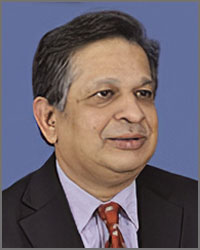
Dr. Sunil Shroff, MS, FRCS, Dip. Urol (Lond.)
President, Tamil Nadu Telemedicine Society of India,
Editor, www.medindia.net,
Consultant Urologist & Transplant Surgeon,
Madras Medical Mission Hospital, Chennai, India (shroffmed@gmail.com).
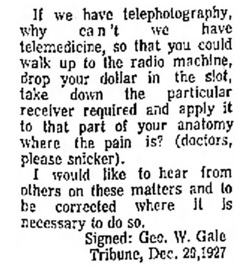
Telemedicine was used for the first time in a publication in December 1927
Geo W. Gale’s Article “Wants Plane to Change Weather Here”
“If we have telephotography, why can’t we have telemedicine, so that you could walk up to the radio machine, drop your dollar in the slot, take down the particular receiver required and apply it to that part of your anatomy where the pain is?
The cited article was dated December 29, 1927.
When was the Term Telemedicine first used in Scientific Literature?
• Telemedical technique – 1970
• Telemedicine – 1972
The term “telemedicine” appeared in the description of the telemedical project of the Arizona Medical University in an article – Arizona TeleMedicine Network: Engineering Master Plan, 1972.
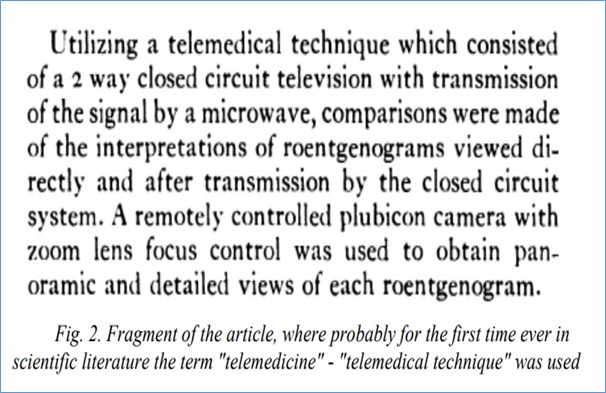
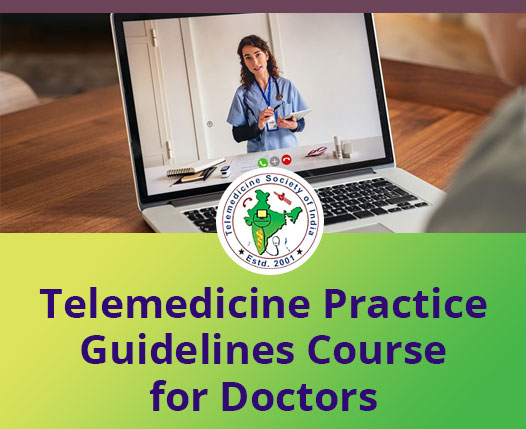
Telemedicine Practice Guidelines – A Foundation Course for RMPs by TSI
To know more about the Telemedicine Foundation Course click on the link below:
https://tsi.org.in/courses/
Telemedicine – News from India & Abroad
India
New Software Identifies Patients Who may Require Ventilator Support
A new software helps identify whether a patient will require ventilator support in an ICU or referral, and will make necessary arrangements before emergency sets in. At a time when sudden ICU and other emergency requirements during the pandemic have been a challenge for hospitals to manage, timely information about such situations.….. Read More
International
Omron, Kyoto University team up to study AI use for early cardiovascular disease prevention
Omron Healthcare and Kyoto University are set to undertake a study under a joint research programme to use artificial intelligence and home-recorded health data in predicting early signs of cardiovascular diseases.Their upcoming study under the Healthcare Medical AI research programme will focus on two themes…..….. Read More
Ophthalmology: A pioneer in the field of artificial intelligence
Ophthalmology, with its heavy reliance on imaging, is an innovator in the field of artificial intelligence (AI) in medicine.Although the opportunities for patients and health care professionals are great, hurdles to fully integrating AI remain, including economic, ethical, and data-privacy issues… Read More
Life Whisperer launches its third global IVF clinic collaboration at ESHRE to apply Artificial Intelligence to Oocytes
LONDON, June 25, 2021 /PRNewswire/ — Life Whisperer, fertility arm of AI healthcare company Presagen, will invite clinics to participate in its third global IVF clinic collaboration at the 37th European Society of Human Reproduction and Embryology (ESHRE) Annual Meeting in June 2021.….. Read More
TN – TSI invites all the TSI Chapters and Members to submit information on their upcoming Webinar or Events (50 words), News related to Telemedicine (200 words) or short articles (500 words) for the monthly e-newsletter.Guidelines for submission to TN TSI Newsletter-
|
Submission may be sent to – tsigrouptn@gmail.com
Editors reserve the rights for accepting and publishing any submitted material.
Editor in Chief – Dr. Sunil Shroff
Editors – Dr. Senthil Tamilarasan & Dr. Sheila John
Technical Partner- www.medindia.net


